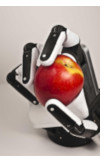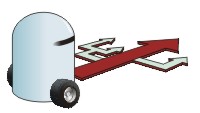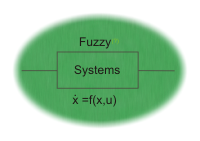Research directions

Mobile robotics related applications are one of the most emerging ones on the market, including aerial, ground and underwater variants. This trend is likely to be continued in the near future too, as long as companies such as Google, Bosch, Toyota are heavily interested and investigating into the future autonomous car.
The main components of a mobile robot include the perception, localization&mapping, planning and low lever control parts. Perception is essential in order to receive and interpret the information from the environment. We use different sensors for this, like IMU, stereo camera, 3D laser or the popular kinect camera. Localization&mapping is referring to the ability of the robot to answer the question where am I with respect to some map information. The creation of a map is strongly related to the localization, as these two are related to each other, usually denoted as simultaneous localization and mapping (SLAM) within the robotics. The planning of the robot gives an answer to the question where I go, and how do I get there. This incorporates advanced reasoning and AI methods too. Finally, the low level control translates the higher level planning command to the robot actuators taking into account the kinematic and dynamical model of the device.
We focus on the application side of these techniques using different platforms that we have in our laboratory, mainly developing code within the ROS framework in C++. Special research topics from these applications are treated in the other research directions from our group.

Robotic manipulators have become a common manufacturing tool in different industries. In the last decade, researchers have extended the applications of robots to many areas, having as practical result new types of robots. One of the most elusive applications has always been in the biomechanical domain, where robots have been designed either to assist patients or medical personnel, with the goal to improve the quality of life.
Independent of the application, the most important part in designing/analyzing a robotic structure is the mathematical model. Robot modeling includes primarily the kinematics and dynamics. Strongly connected with the robot model is the simulation and testing of the models.
In this research direction, we focus mainly on applications of robotics in the domain of biomechanics and in the implementation of relevant designs and control strategies. In particular, we focus on designing robotic systems suitable for each application and developing controllers that match the necessary specifications.

Optimal control can address practical problems appearing in a wide variety of fields, such as automatic control, artificial intelligence, operations research, economics, medicine, etc. In these problems, a nonlinear dynamical system must be controlled so as to optimize a cumulative performance index over time. While optimal solutions have been theoretically characterized starting in the 1950s, computational methods to find them are still a challenging, open area of research.
In this research direction, we focus on the development of methods originating from artificial intelligence and their usage in automatic control. In particular, we are investigating reinforcement learning and planning techniques, developing fundamental lines like complexity analysis on the one hand, and on the other hand adapting the techniques to solve to open problems in nonlinear control, such as networked or hybrid control systems. On the application side, we are investigating the application of these methods to the control of mobile robots for underwater litter collection and domestic assistance.

Most nonlinear systems contain nonlinearities that are bounded in a bounded region of the state space. Based on this fact, “fuzzy” rules, originally used as smooth interpolators between several behaviours acquired a new meaning and modern fuzzy control, together with LPV control arose in the late 90’s as a successful approach to control nonlinear systems. Takagi-Sugeno (TS) fuzzy models can be regarded as a blending of linear models via non-linear functions. Stability and observer or controller design conditions for these models are usually developed via Lyapunov's direct method.
For the sake of simplicity, classically a quadratic Lyapunov function has been used. Lately, nonquadratic Lyapunov functions gained more interest, with significant results mainly in the discrete-time case, while in the continuous-time their use led to the development of local results.
This research direction focuses on the development of methods for TS models and their practical application in mechanical systems. Specifically, we investigate analysis and design for systems that have a switching nature or that can be described using descriptor models.
